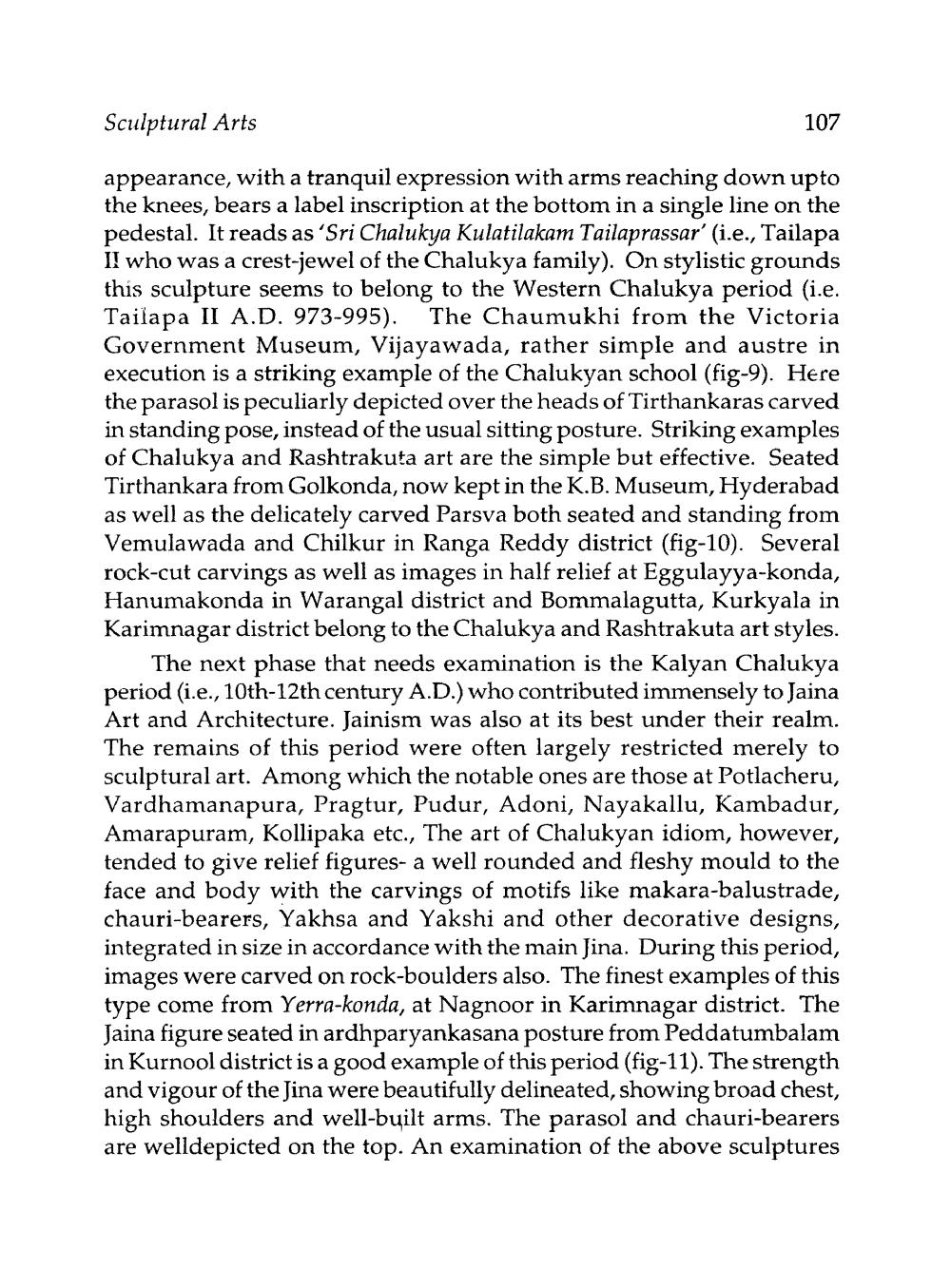________________
Sculptural Arts
107
appearance, with a tranquil expression with arms reaching down upto the knees, bears a label inscription at the bottom in a single line on the pedestal. It reads as 'Sri Chalukya Kulatilakam Tailaprassar' (i.e., Tailapa II who was a crest-jewel of the Chalukya family). On stylistic grounds this sculpture seems to belong to the Western Chalukya period (i.e. Tailapa II A.D. 973-995). The Chaumukhi from the Victoria Government Museum, Vijayawada, rather simple and austre in execution is a striking example of the Chalukyan school (fig-9). Here the parasol is peculiarly depicted over the heads of Tirthankaras carved in standing pose, instead of the usual sitting posture. Striking examples of Chalukya and Rashtrakuta art are the simple but effective. Seated
nkara from Golkonda, now kept in the K.B. Museum, Hyderabad as well as the delicately carved Parsva both seated and standing from Vemulawada and Chilkur in Ranga Reddy district (fig-10). Several rock-cut carvings as well as images in half relief at Eggulayya-konda, Hanumakonda in Warangal district and Bommalagutta, Kurkyala in Karimnagar district belong to the Chalukya and Rashtrakuta art styles
The next phase that needs examination is the Kalyan Chalukya period (i.e., 10th-12th century A.D.) who contributed immensely to Jaina Art and Architecture. Jainism was also at its best under their realm. The remains of this period were often largely restricted merely to sculptural art. Among which the notable ones are those at Potlacheru, Vardhamanapura, Pragtur, Pudur, Adoni, Nayakallu, Kambadur, Amarapuram, Kollipaka etc., The art of Chalukyan idiom, however, tended to give relief figures- a well rounded and fleshy mould to the face and body with the carvings of motifs like makara-balustrade, chauri-bearers, Yakhsa and Yakshi and other decorative designs, integrated in size in accordance with the main Jina. During t is period, images were carved on rock-boulders also. The finest examples of this type come from Yerra-konda, at Nagnoor in Karimnagar district. The Jaina figure seated in ardhparyankasana posture from Peddatumbalam in Kurnool district is a good example of this period (fig-11). The strength and vigour of the Jina were beautifully delineated, showing broad chest, high shoulders and well-built arms. The parasol and chauri-bearers are welldepicted on the top. An examination of the above sculptures




